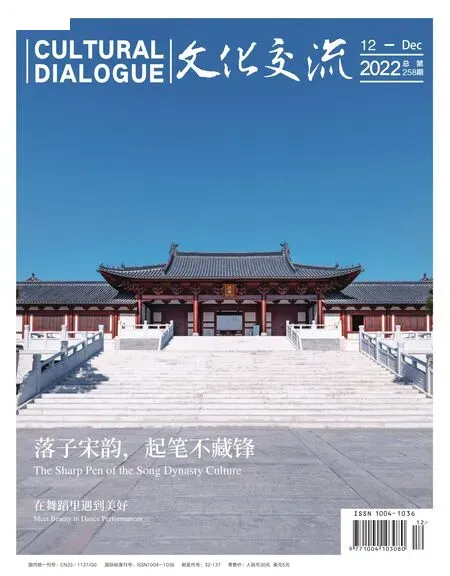浙江青瓷:无与伦比的世界母瓷
文/洪加祥
无论走在世界任何角落,也无论愿不愿意,只要你是中国人,都会天然地被打上瓷器的烙印。这个烙印揭不了、抹不去,因为你血脉里流动着瓷器文化;瓷器是中国,中国就是瓷器,瓷器有着赤子的情怀、火样的性格、至纯至美的外形,这种中国烙印谁也无法将其抹去。
最令浙江人引以为傲的也是瓷器,因为华美莹澈的浙江青瓷是世界陶瓷的母窑。世界考古史表明,最早的陶瓷是中国人烧造的,其中最早发明瓷器的就是浙江人。传统观点认为,公元前8000~2000 年,中国人发明了陶器,但浙江近些年在浦江县上山文化堆积层中,发掘出一万年前的陶器制品,使得中国陶器史向前推进了二三千年(最近江西万年县仙人洞遗址的考古发掘,更是将中国陶器制作历史推至两万年前)。
但中国原始瓷最早的窑址,位于浙江德清的火烧山窑址,迄今有8000多年历史。这在世界瓷业生产中是最早的。
故宫陶瓷专家陈万里生前对浙江青瓷情有独钟,认为“一部中国陶瓷史,半部在浙江”;浙江陶瓷史大半部在越窑和龙泉窑青瓷。浙江越窑青瓷是中国和世界瓷器的母窑,其深远的历史与现实意义,远未被完全挖掘和开发利用。
越窑的美,美在青瓷的莹澈、温润如玉。一千多年前,唐代陆龟蒙赞美越窑青瓷说,“九秋风露越窑开,夺得千峰翠色来”。唐代文人雅士喜欢饮茶,越窑青瓷华兹高贵的釉质,青绿略带闪黄的色泽,烘托出茶汤完美的色泽。
汉唐以后,越窑青瓷在浙江各地遍地开花。到了五代,越窑青瓷达到了中国南北瓷器仰望的巅峰状态,不仅出现了秘色瓷,而且在工艺、胎质和釉的配方以及再创新等方面都达到了当时世界最高水平,后来的官哥汝定钧窑瓷器,从胎釉到造型以及烧造工艺,无一不是从五代越窑仿烧演化而来,甚至北宋的八大窑系,也都深深刻着浙江越窑精美工艺的烙印。
五代越窑青瓷釉面光滑,釉层透明温润,造型上棱角分明趋于秀美,同时在装饰上集中了汉唐越窑的优势并加以创新发展,刻花、剔花、印花技术发展到了高度成熟的阶段。五代越窑胎骨细腻、釉薄均匀,使得工艺装饰题材得到更多的运用,无论是堆塑还是刻画,花鸟、动物、人物、自然等一应俱全,蟠龙、鹤、凤、荷花、秋葵、牡丹栩栩如生,江河湖海的波纹水纹既汹涌又灵动飘逸;人物轮廓生动,线条优美。尤其是莲花瓣装饰,开一代先河,成为宋元明清各代传承变化的技法特征,既承袭了唐代金银器和铜镜、织绣的特点,又构图严谨,不断创新各类精美花纹,体现了五代时期浙江青瓷的最高水准。

宋代龙泉五管盖瓶。浙江省博物馆/展出A five-spouted jar made at the Longquan Kilns and dated to the Song period, on display at the Zhejiang Provincial Museum.
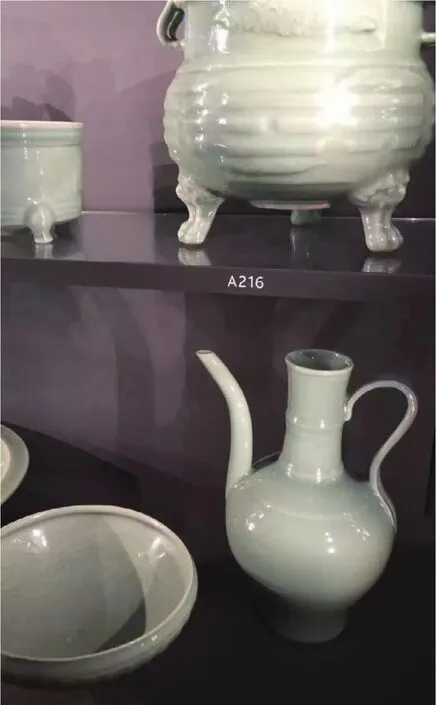
宋元龙泉窑青瓷。大英博物馆/收藏Celadon wares made at the Longquan Kilns and dated to the Song period, collected at the British Museum.
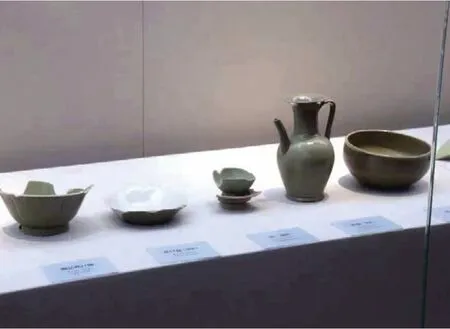
上林湖越窑博物馆内展品。Cultural relics are on display at the Shanglin Lake Yue Kilns Museum in Ningbo city, Zhejiang province.

上林湖越窑博物馆内展品。Cultural relics are on display at the Shanglin Lake Yue Kilns Museum in Ningbo city, Zhejiang province.
四十多年来,我几乎跑遍福建闽北、河南各窑址以及河北、山西、安徽、江西的南昌、上饶、景德镇等地古窑址,对浙江青瓷有了更多了解,更深的研究。
浙江青瓷到了宋代,出现了令世界震惊的南宋官窑、哥窑,而龙泉生产的粉青和梅子青,更是令人惊叹不已。近年来,收藏中国古代瓷器艺术品时,国际藏家必选浙江青瓷作为压箱底。他们认为,浙江青瓷历史最悠久,文化艺术价值高,值得永久收藏;而龙泉窑则是继越窑之后,再次代表浙江登上了中国青瓷艺术的最高峰。明代人评价:“龙泉窑器,土细质厚,色若葱翠。”《中兴礼书》记载:“南宋中兴初年,京郊大祭,着临安府命各府进呈青瓷礼器。”这其中就有龙泉瓷,而当时龙泉大窑已烧出薄胎厚釉的粉青产品。很显然,南宋早期,在杭州尚未建置御用官窑时龙泉瓷器已进宫。这一观点亦说明龙泉窑的历史地位。
根据杭州老虎洞窑开窑的历史堆积层分析,此窑当时正处起窑阶段,南官瓷器尚未捏成素胎,更没投入窑内烧制。龙泉窑烧制薄胎厚釉类粉青瓷器的历史,自然比南宋官窑早。尤其是皇宫遗址发现诸多龙泉青瓷碗盘残件,后人将其当作“龙泉仿官”,这就显得非常牵强,缺乏根据。从杭州郊坛下官窑青瓷来看,窑址里的残器与龙泉青瓷的面目几近一样,似有师傅带徒弟的传承关系。这更说明,龙泉青瓷大窑产品在南宋早已用于朝廷与王公贵族,如果不是官办窑址,至少是一种官搭民烧的名窑产品。
黄宾虹常用“浑厚华滋”四字评价中国画和龙泉青瓷的最高境界。这与黄宾虹早年随父在金华开古玩店,从小浸润于龙泉青瓷是分不开的。我认为,宾虹先生对龙泉青瓷的评价是准确的,其中包含造型美和釉色美的特征,而“端庄杂流丽,刚劲含婀娜”,亦是浑厚华滋的具体表现。
那么,又该如何看龙泉大窑青瓷釉色呢? 南宋赵彦卫的《云麓漫钞》是最早记载龙泉青瓷呈色的:“青瓷器,皆云出自李王,号秘色,又曰出钱王。今处之龙溪出者色粉青,越乃艾色。”这是古人对龙泉粉青釉鉴定的说法,也给了今人在判断龙泉青瓷与其他窑口青瓷之区别时的一些启示。
讲宋代浙江青瓷,其实是讲龙泉经典釉色,不外乎粉青、梅子青。从文献记载来看,粉青是南宋龙泉区别于其他青瓷窑口的第一个特点。但五代越窑的“艾色”也有,即青中带黄的草绿色,是此前较为普遍的青瓷呈色,而梅子青系多次施釉,施玛瑙釉而致,像新鲜的梅子那般好看。
1999年3月,我曾经作为参加全国两会采访报道的记者,采访过龙泉青瓷“祖师爷”、全国人大代表徐朝兴。他认为,龙泉青瓷生产历史一千多年,是中国陶瓷史上烧制年代最长、窑址分布最广、产品质量最高、生产规模和外销范围最大的浙江名品青瓷。龙泉窑从清末民初开始逐渐不被重视,与明代未排入五大名窑有关,这也与当时战乱和历史资料缺失有关。尽管如此,国内外人士仍对龙泉青瓷相当重视,而龙泉青瓷真正的历史意义与现实价值,还有待于进一步从考古发现与工艺传承两方面来加以认证以及进行文化考量。
前些年,在龙泉溪口瓦窑垟、小梅瓦窑路窑址的考古发掘中,发现了大量黑胎龙泉窑瓷器。从早期窑炉内出土黑胎的青瓷中,又发现了龙泉青瓷官窑的一些蜘蛛马迹。杭州卷烟厂边皇城生活遗址,也出土了一些龙泉窑黑胎瓷片标本,当时曾一度以为是官窑遗存,但细究胎质却不见杭州紫金土成分,最后断定为龙泉青瓷。
我曾赴伦敦苏富比考察与讲学,当时,中国青花瓷和南宋龙泉的拍卖价首次超越欧美油画价格。英国收藏大家吉赛曾对我们说:“恐怕再过三十年,中国人才会真正懂得浙江青瓷的无与伦比和宋瓷的财富效应。”
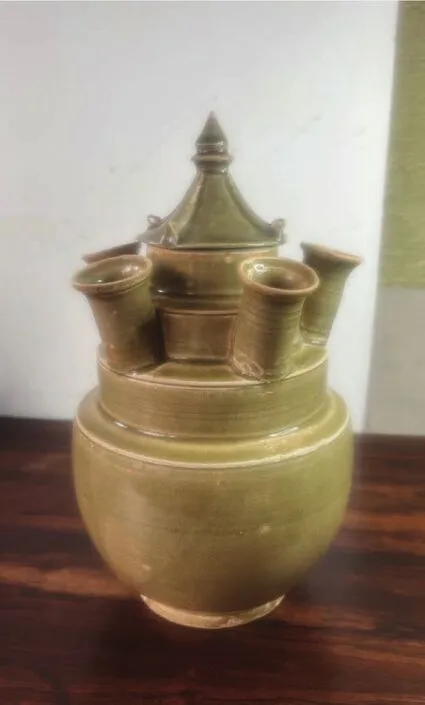
五代越窑五管盖瓶。A five-spouted jar made at the Yue Kilns and dated to the Five Dynasties and Ten Kingdoms period.
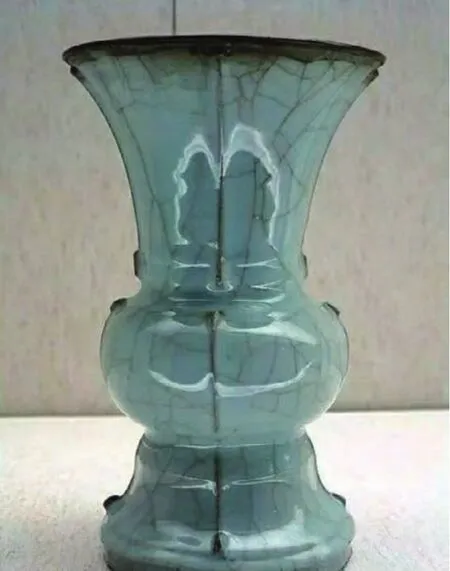
南宋官窑出戟花觚。故宫博物院/收藏A wintergreen celadon goblet unearthed from the Southern Song Dynasty Guan Kilns, collected at the Palace Museum.
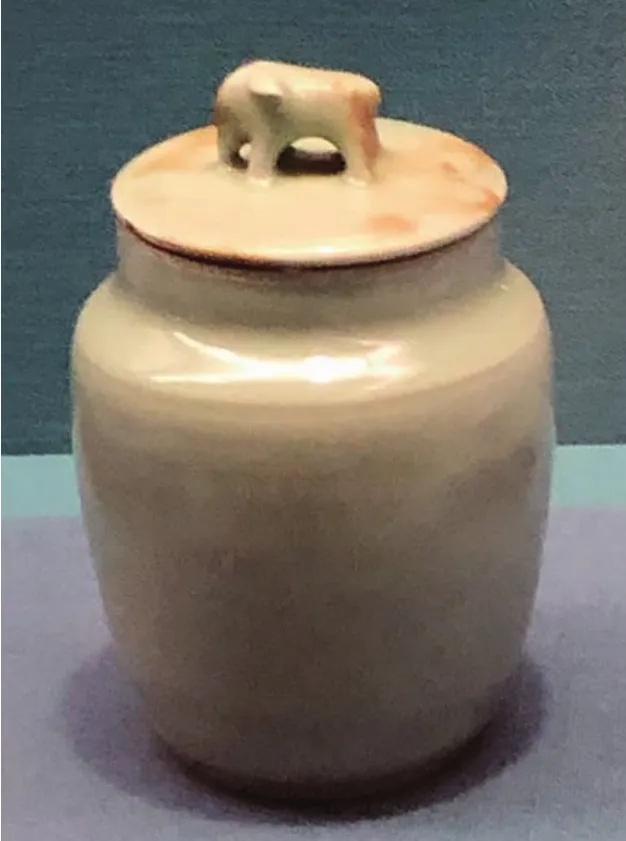
浙江省博物馆举办的南宋龙泉青瓷展展品。A Longquan celadon pot is on display at the Zhejiang Provincial Museum.
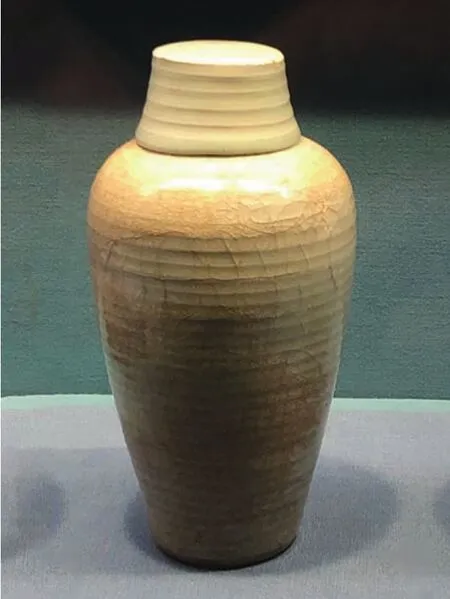
浙江省博物馆举办的南宋龙泉青瓷展展品。Two Longquan celadon pots are on display at the Zhejiang Provincial Museum.
我笑着回答他说:“先富起来的浙江人,其实在青瓷投资上早有所准备,宁波、绍兴、丽水和杭州等地,不仅有保护很好的青瓷古窑址,杭州、宁波、温州、义乌等地藏家还时常出没于国内外拍卖市场,扫货‘雪拉同’的魄力更是震惊世界。我所接触的众多藏家,都在发掘、研究和传播中国古陶瓷文化,尤其是热衷于收藏保护浙江青瓷和进行母窑文化研究,并且有很多人正在积极开博物馆、办研讨会和建青瓷工作室。”
根据多年研究,我曾在囯家发改委南昌艺术品评估鉴定培训会议上授课时提出,浙江青瓷是世界工业革命前中国创烧的第一代高端科技产品,并作为艺术品成为交流到世界各地的第一批全球化大桩商品,从夏商周的德清火烧山原始青瓷至汉唐浙东上林湖系列古窑址,再到宋元的龙泉青瓷以及瓯窑、婺州窑等,引领世界陶瓷工艺数千年。
浙江经济30多年高速发展,也是在这种深厚历史文化、高端工艺设计理念与商业作坊模式的影响下,一步步传承创新并向前拓展的,这让我们感受到古代浙江强盛的科技与工业力量,曾引领世界经济不断增长与文化交流不断深化。
正是因为有了这种历史文化内在的动力,才让今天的我们越来越清晰地意识到,以人工智能、机器制造、家电更新换代和互联网电商引领对外贸易持续发展的浙江经济文化大发展中,亦可通过学习、鉴赏和收藏古代浙江青瓷艺术品深入了解历史文化发展规律,从而不断增强浙江经济与企业财富增长的韧性与软实力。
浙江青瓷发展到宋元时期,迎来对外出口的黄金时代。在重要港口遗址如宁波港、泉州港等的考古发掘,以及华光礁1号、南海一号等海上考古发掘中,均发现大量的龙泉、瓯窑青瓷。历史终于还原了浙江青瓷大量销售海内外的真相。
从东南亚及欧美仿造浙江青瓷的历史看,前500 年属低仿,科技含量和工艺水平无法达到浙江的高超技艺。后500年中国内乱外患,青瓷发展停滞,西方开始文艺复兴运动和工业革命,而我们的青瓷制作水平仍停留在恢复阶段。20年来,浙江青瓷在政府与民众的不懈努力下,重回高光时刻,龙泉青瓷在世博会和G20杭州峰会上又大放异彩。
目前,浙江龙泉青瓷传统烧制技艺被联合国教科文组织列入人类非物质文化遗产代表作名录。浙江青瓷作为世界瓷器无与伦比的母窑,代表中国陶瓷名录入库,终于实至名归,得到世界公认,这是浙江的历史荣耀与永远的骄傲。
Zhejiang Celadon:“Mother” of World’s Porcelain
By Hong Jiaxiang
Wherever you go in the world, whether like it or not, as long as you are Chinese, you will be naturally associated with porcelain.This association cannot simply be shaken off or erased, because you have the culture of porcelain flowing in your veins: China is porcelain, and porcelain is China.
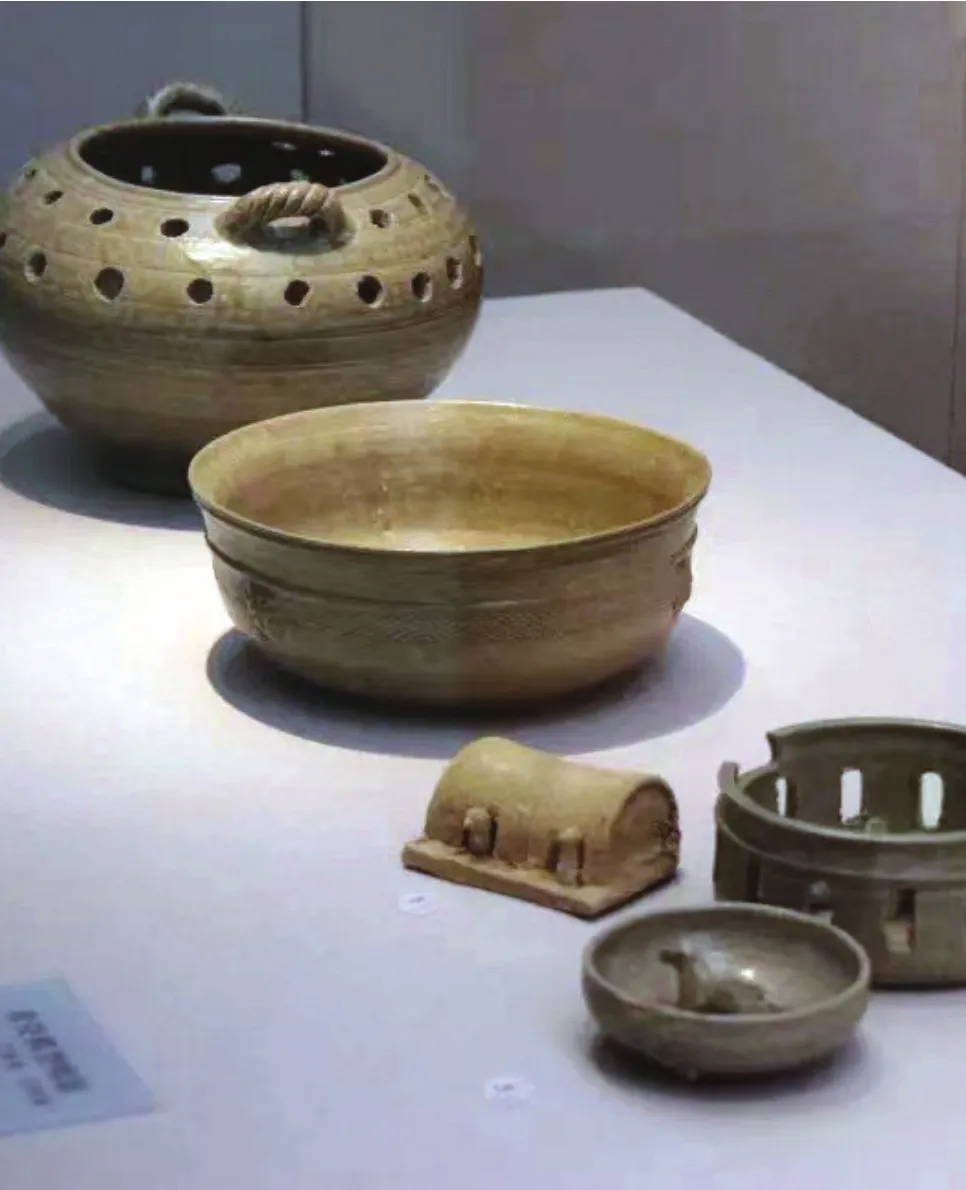
上林湖越窑博物馆内的展品。Cultural relics are on display at the Shanglin Lake Yue Kilns Museum in Ningbo city, Zhejiang province.
What has made Zhejiang people most proud is also porcelain,because Zhejiang celadon is the “mother” of the world’s porcelain.Archaeological studies show that the earliest ceramics were made by the Chinese people, and the earliest porcelain was made by the Zhejiang people. Traditional views held that pottery was invented in around 8000 to 2000 BC, but sherds unearthed in Shangshan Archeological Site in Zhejiang’s Pujiang county proved to be over 10,000 years old, pushing the history of Chinese pottery back by 2,000-3,000 years. More recently, archeological finds at the Xianren (or Immortals) Cave in Wannian county, neighboring Jiangxi province have pushed it further back, to 20,000 years ago.
Nevertheless, the earliest kiln site producing China’s protoporcelain, Huoshao Mountain Kiln site, is located in Zhejiang’s Deqing county, with a history of more than 8,000 years.
Chen Wanli (1892-1969), a foremost ceramics expert in the Palace Museum, had a special fondness for Zhejiang celadon.He believed that “of the history of Chinese ceramics, half lies in Zhejiang”, and the celadon from the Yue Kiln and the Longquan Kiln comprises the major part of Zhejiang’s ceramics history. In fact, as the “mother” kiln of porcelain in China and the world, the profound historical and practical significance of Yue Kiln and its celadon products is far from being fully explored.
The beauty of Yue Kiln lies in the bright and clear celadon it produced, which is as gentle as jade. More than 1,000 years ago, Lu Qiumeng, a Tang dynasty (618-907) poet, once declared,“When the Yue Kiln opens in late autumn, the verdant celadon cover a thousand mountain peaks,” describing the spectacular scene of porcelain-making at the Yue Kiln during his time. Tang literati were fond of drinking tea and the Yue celadon happens to show the perfect greenness of the tea.
After the Tang dynasty, Yue celadon blossomed everywhere in Zhejiang. In the Five Dynasties and Ten Kingdoms period(907-979), Yue celadon reached its peak. It was when the “Mise Ware” (mise literally means “secret color”), the finest type of Yue celadon, emerged, with the product quality, glaze and innovative production all at the top. Indeed, almost all the famous kilns that later followed, even the “eight great kilns” in the Northern Song dynasty (960-1127), were deeply influenced by the Yue Kiln.
The Yue celadon in the Five Dynasties and Ten Kingdom period was smooth in glaze and transparent in layers, with more appealing shapes. At the same time, the strengths of Yue celadon in decoration from previous dynasties were passed down and further developed, as surface-pattern carving and printing techniques reached a highly mature stage. During that period, the Yue celadon was delicate, and the glaze thin and uniform, making decoration themes more diverse. Whether it is the carving of flowers, birds and figures, or the tide patterns of rivers, lakes and seas, the subjects were varied and vivid. Lotus petal decoration, in particular, was the first of its kind in a generation, and its changes became hallmarks of dynastic transformation in the Song (960-1279), Yuan (1206-1368), Ming (1368-1644) and Qing (1616-1911) eras. It not only inherited the characteristics of gold- and silverware, bronze mirrors and embroidery of the Tang dynasty,but also had a rigorous composition, with constantly innovated exquisite patterns, representing the highest level of Zhejiang celadon since the Five Dynasties and Ten Kingdoms period.

作者在上海博物馆参加古瓷鉴定活动。The author attends a porcelain-appraisal event at the Shanghai Museum.
For more than 40 years, I have been to almost all the kiln sites in northern Fujian and Henan, as well as the ancient kiln sites in Hebei, Shanxi, Anhui and Jiangxi, helping identify the Shanglin Lake Yue celadon products unearthed in these places.Some of them are more exquisite than the “Five Famous Song Kiln Sites” in terms of their shapes and glaze, and I found that they have been inherited from the Yue Kiln. In lectures in London, or in training courses with with top domestic appraisal experts in Tsinghua University, Zhejiang University, everyone agreed with my assessment that Zhejiang’s Yue celadon of the Five Dynasties and Ten Kingdoms is the “mother” of all the Song dynasty porcelain,and there is a clear relationship of inheritance, absorption and development.
When it came to the Song dynasty, the Guan Kiln and the Ge Kiln, which would later stun the world, emerged, and the celadon wares with pink blue and plum green colors produced by Longquan appeared. In recent years, when collecting ancient Chinese porcelain artworks, international collectors would invariably choose Zhejiang celadon wares and regard them as the most important. They believe that Zhejiang celadon has the longest history and high cultural and artistic value, worthy of permanent collection. No wonder, as the Longquan Kiln was another peak of Chinese celadon production in Zhejiang after the Yue Kiln.
Ample archeological evidence has shown that the Longquan celadon wares had already been widely used in the imperial court and by nobles in the Southern Song dynasty (1127-1279). Even if not government-run, the Longquan Kiln was at least a famous civilian-operated kiln site providing exquisite celadon to officials and the public alike.
Huang Binhong (1865-1955), a well-known painter who hailed from Zhejiang’s Jinhua city, often described the highest level of Chinese painting and Longquan celadon as “Hun Hou Hua Zi”(roughly translated as “profound and gentle”). This is inseparable from the fact that Huang opened an antique shop with his father in Jinhua in his early years and immersed himself in Longquan celadon since childhood. For me, Huang evaluation of Longquan celadon is accurate, which captures the features of its beautiful shape and glaze.
In March 1999, I interviewed Xu Chaoxing, a great master of Longquan celadon and a deputy to the National People’s Congress. He believed that Longquan celadon has a production history of more than 1,000 years, and of Zhejiang’s celadon, it is the celadon with the longest production period, the widest distribution in terms of kiln sites, the highest product quality, the largest production scale and the largest export range in the history of Chinese ceramics. In the late Qing dynasty, Longquan Kiln was somewhat in decline, which was related to the fact that it was not included in the “Five Famous Kilns” in the Ming dynasty.However, great importance has been attached to Longquan celadon, but its real historical significance and value still need to be further discovered.
I once went to Sotheby’s in London to deliver lectures. It so happened at the time that the auction prices of Chinese blue and white porcelain as well as its Southern Song dynasty Longquan celadon surpassed those of European and American oil paintings for the first time. A well-known British collector once said: it will be another thirty years before the Chinese truly understand the incomparable Zhejiang celadon and the wealth that the Song dynasty porcelain could generate.
I answered him with a smile: those Zhejiang people who got rich first were already prepared for celadon investment. In Ningbo, Shaoxing, Lishui and Hangzhou, there are not only wellprotected celadon kiln sites, collectors from these and other places also make frequent appearance in the auction market at home and abroad. Many collectors I know of are opening museums, holding seminars and establishing celadon studios and workshops in order to discover, study and spread ancient Chinese ceramic culture,especially the celadon and master kiln culture of Zhejiang.
Based on years of research, I once gave a lecture during a training session at the National Development and Reform Commission. I proposed that Zhejiang celadon was the first generation of high-end scientific and technological products created and fired in China before the Industrial Revolution, and it eventually became the first batch of bulk commodities for art exchange globally. The craftsmanship of Zhejiang’s celadon-making has led the world for thousands of years.
The rapid economic development of Zhejiang over the past three decades is also steeped in this profound history and culture, and under the background of high-end craft design and commercial workshop model. Step by step, through inheritance,innovation and expansion, the strong scientific, technological and industrial power of ancient Zhejiang, which once led the economic growth and cultural exchange of the ancient world, was made all the more evident.
It is precisely this inherent force of history and culture that continues to power the economic and cultural development of Zhejiang, now led by artificial intelligence, machine manufacturing and e-commerce, among others.
In September 2009, the UNESCO inscribed the traditional firing technology of Longquan celadon on its Representative List of the Intangible Cultural Heritage of Humanity, the only ceramic item on the list. Zhejiang celadon, as the incomparable “mother”porcelain of the world, deserved to be recognized as such. This is the historical glory of Zhejiang and its pride forever.

